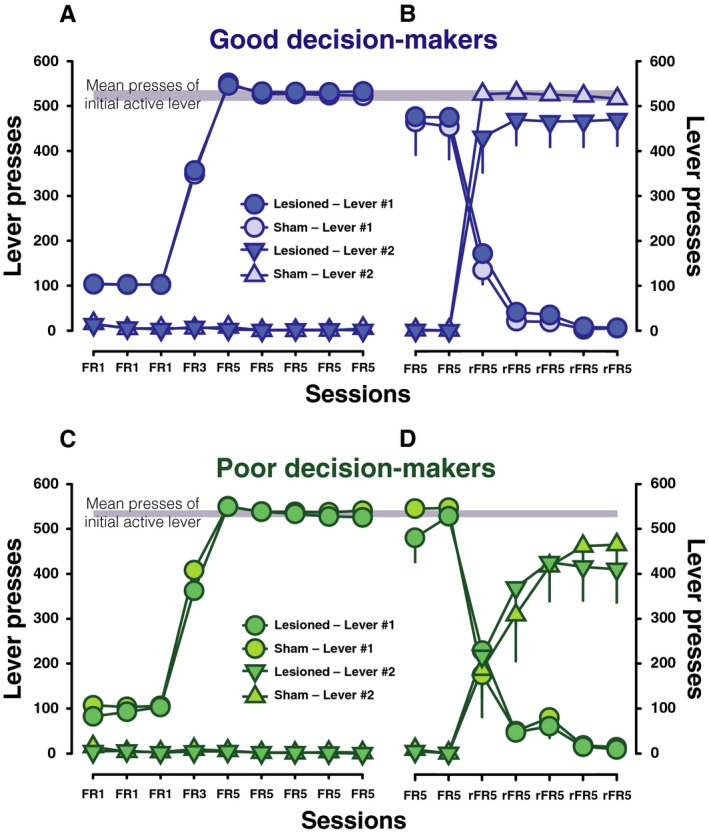Figure 3.

Preserved acquisition of instrumental response in all rats and impaired behavioural flexibility only in PDM. (A and C) Neither decision‐making trait nor AIC lesion affected the acquisition of instrumental conditioning. The total number of lever #1 presses, that is current active lever presses, increased in parallel with the increased behavioural requirement from FR1 to FR5 in both lesioned and sham operated good and poor decision‐makers. Lever #2 presses, that is current inactive lever presses, remained low in all groups. (B) After two additional FR5 sessions in which only lever #1 is active, the contingencies were reversed for five sessions such that lever #2 is now active (rFR5). In both lesioned and sham good decision‐makers, after switching, the total number of lever #1 presses decreased in parallel with the increased total number of lever #2 presses. Active lever presses summed for the five FR5 sessions of the acquisition phase and for the five rFR5 sessions of the reversal phase did not differ in these groups. (D) PDM under the same reversal conditions decreased their responses on the now inactive lever #1, but exhibited lower lever presses for the lever #2, that is the new active lever, in comparison to GDM. PDM did not attain the same mean level of responsing as represented in grey following reversal. Their sums of active lever presses through FR5 sessions and through rFR5 sessions differed, reflecting also the impaired reallocation of the instrumental response. Data are group means and SEM. [Colour figure can be viewed at wileyonlinelibrary.com].
